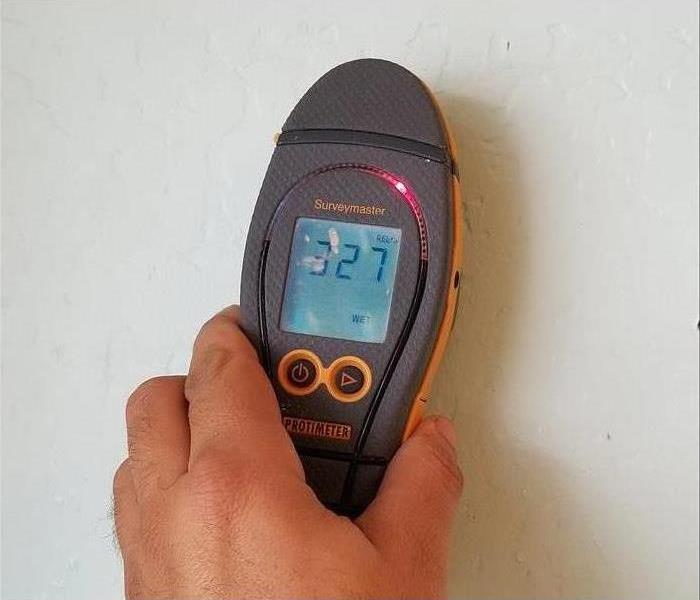What is a Moisture Meter?
9/17/2020 (Permalink)
If you’ve ever had a restoration team repair flood damage to your home, you’ve probably encountered some sci-fi looking devices that the technicians pulled out and occasionally told you were saying something significant. It’s understandable if you wondered whether these are actually high-tech tools or just gimmicks meant to fool you into paying a contractor.
One of these mystery tools is called a “moisture meter” and today we want to explain them a little better so you know what our technicians are looking at.
Obviously we can only vouch for our own technicians’ honesty, but we can re-assure you that moisture meters are a legitimate piece of technology used throughout the industry. In fact, consumer-grade moisture meters are widely available at hardware retailers or online.
How Do Moisture Meters Work?
There are two main types of moisture meters: resistance meters (pin meters) and capacitance meters (pinless).
Pin meters have two small sharp detectors that are inserted into wood. They detect moisture by measuring the electrical current that travels between the pins. This is a fast and proven method of measuring moisture in wood, but it will slightly damage the material that’s being inspected.
Capacitance meters are good for using on materials that can’t or shouldn’t be penetrated with pins. They work by creating an electromagnetic field that is affected by the moisture in the material.
How Do Technicians Use Moisture Meters?
Your SERVPRO technicians will make an initial moisture reading during their first visit to your building. At that time they’ll make a determination about the best drying method depending on the moisture level and material that’s being restored, and then they’ll get the restoration process started.
Every day after that, a technician will visit your site to take follow-up readings. They’ll use the same moisture meters on the same material to ensure consistency, so if they used a capacitance meter on the wall during the initial inspection, they’ll use a capacitance meter in every other reading.
If you have experienced water damage, contact SERVPRO of Sunland/Tujunga and let us know how we can help you.




 24/7 Emergency Service
24/7 Emergency Service